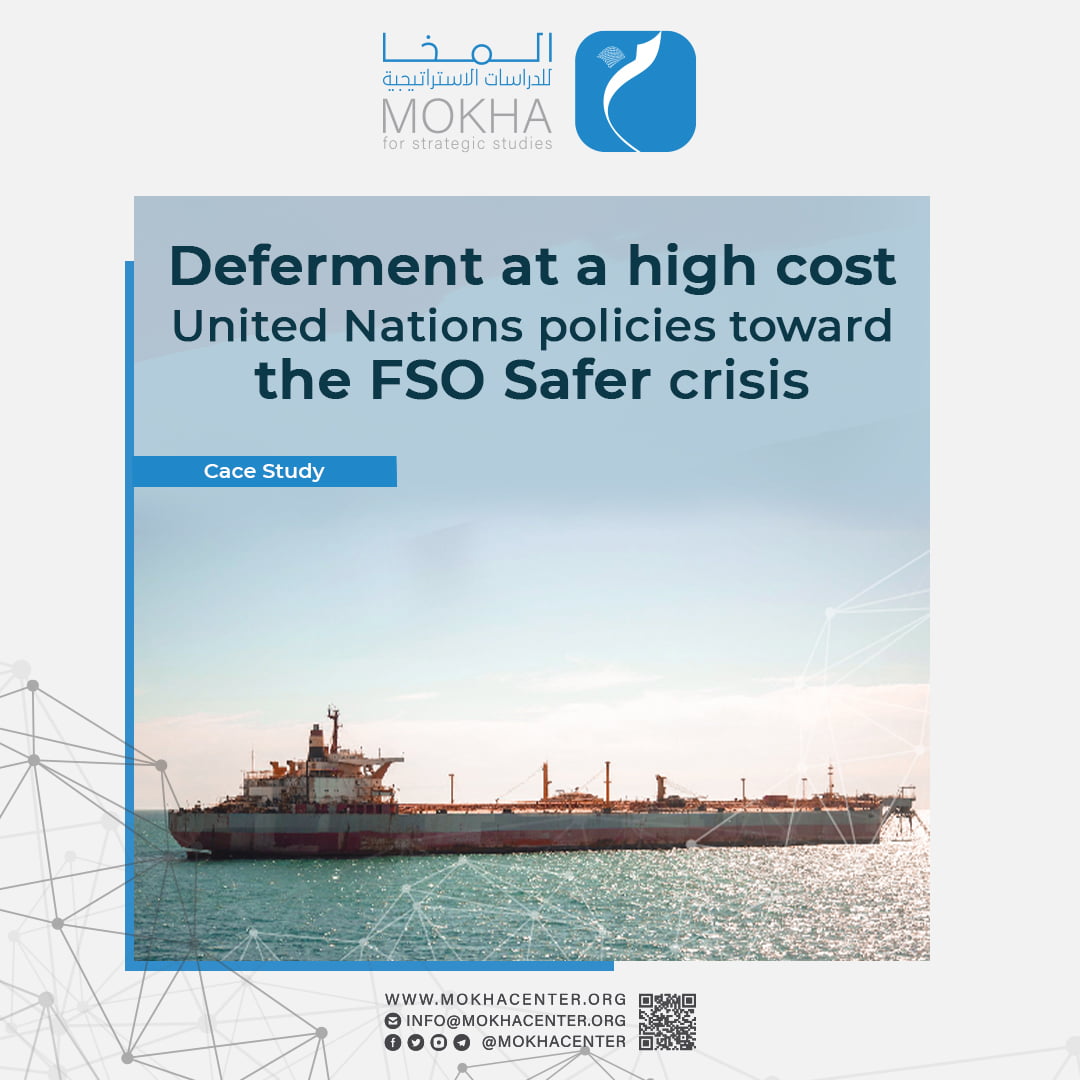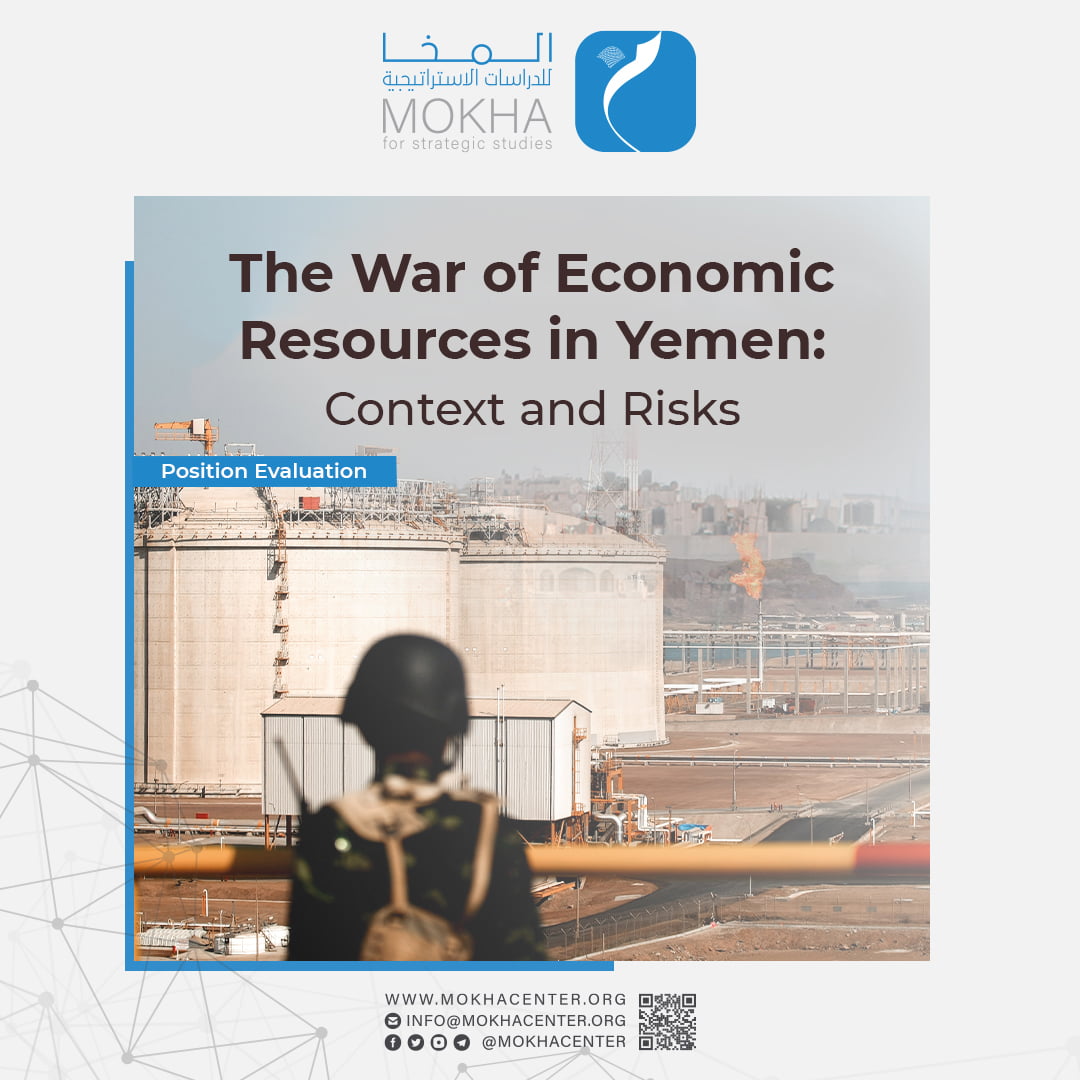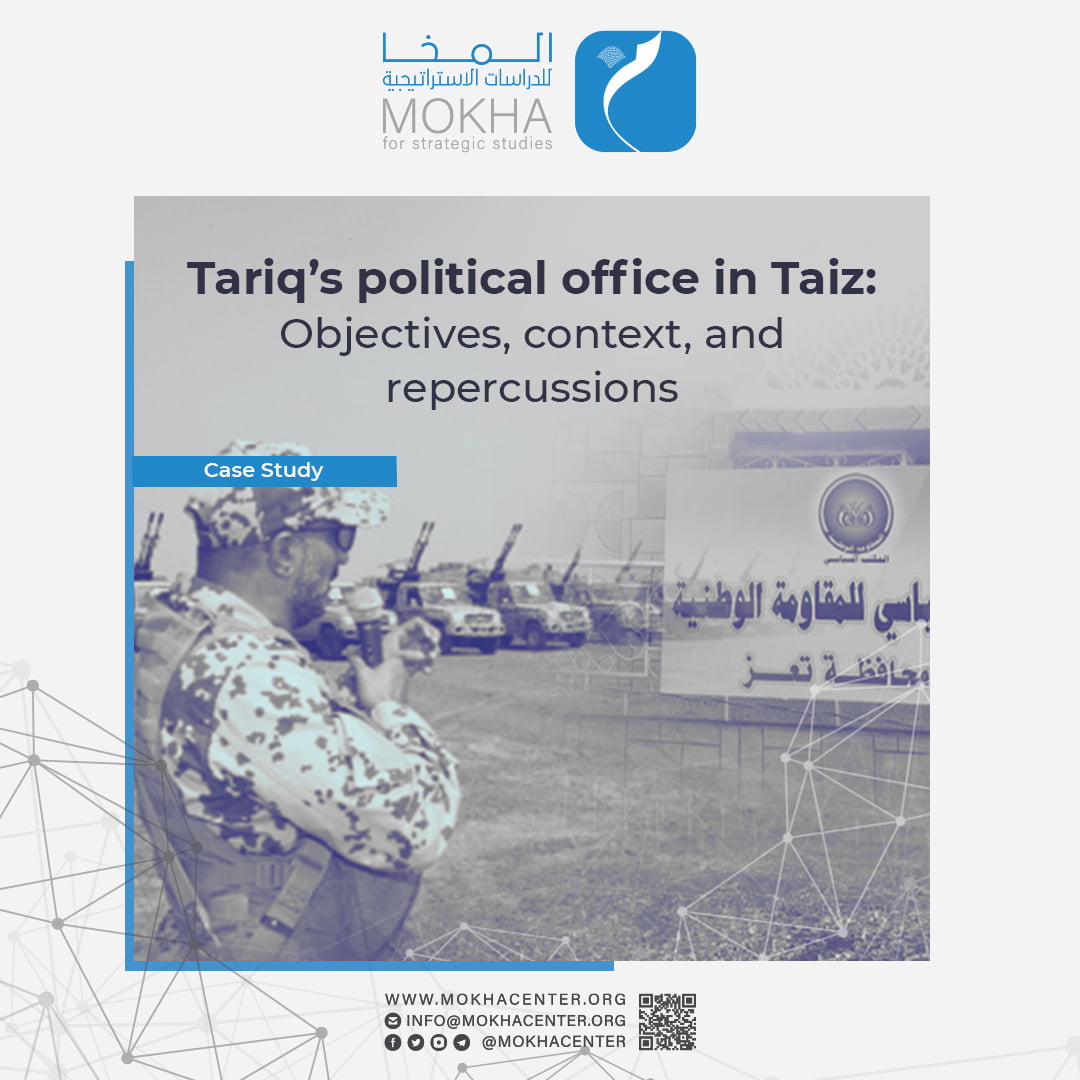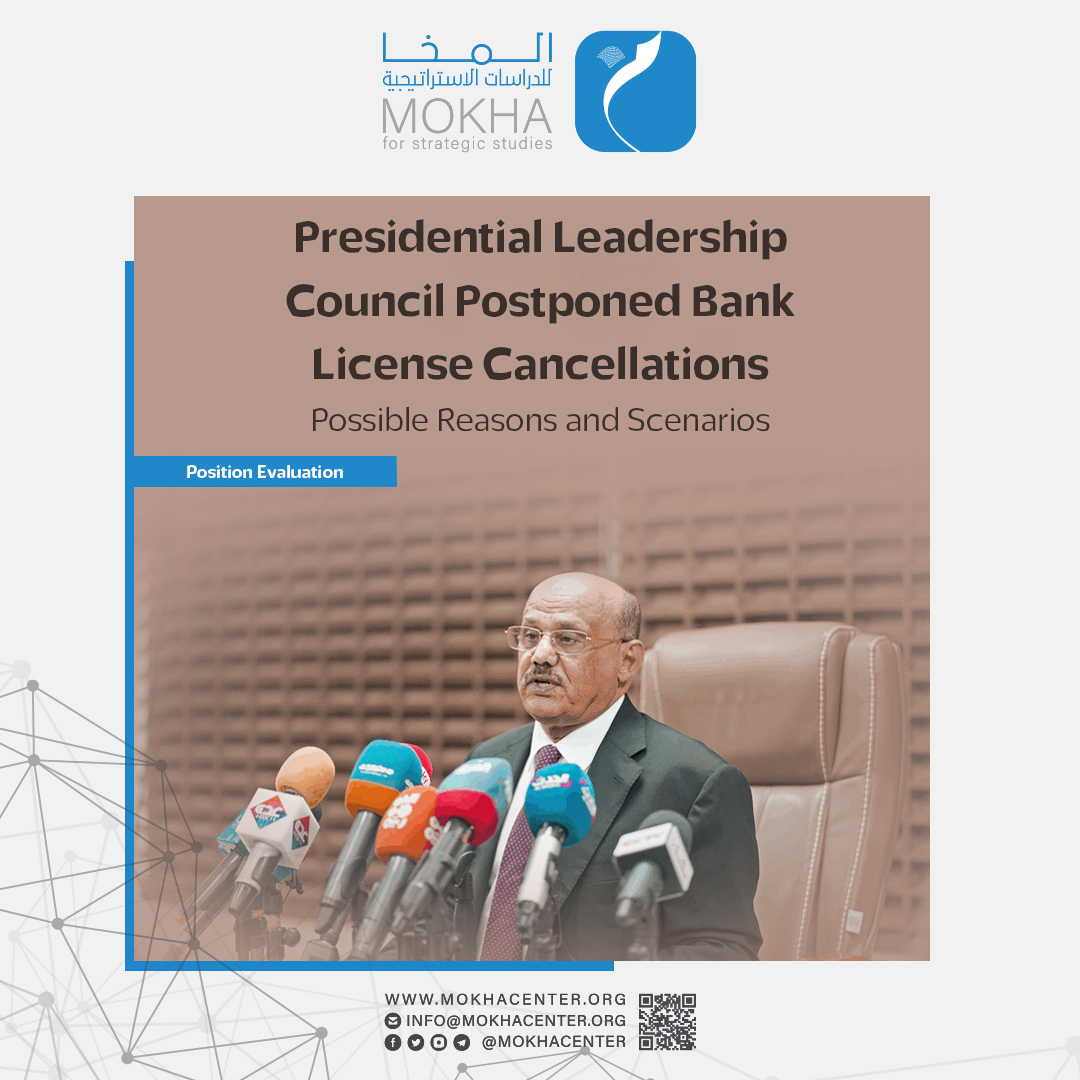The Limits of Yemen’s Benefit From De-Escalation Policies in the Region
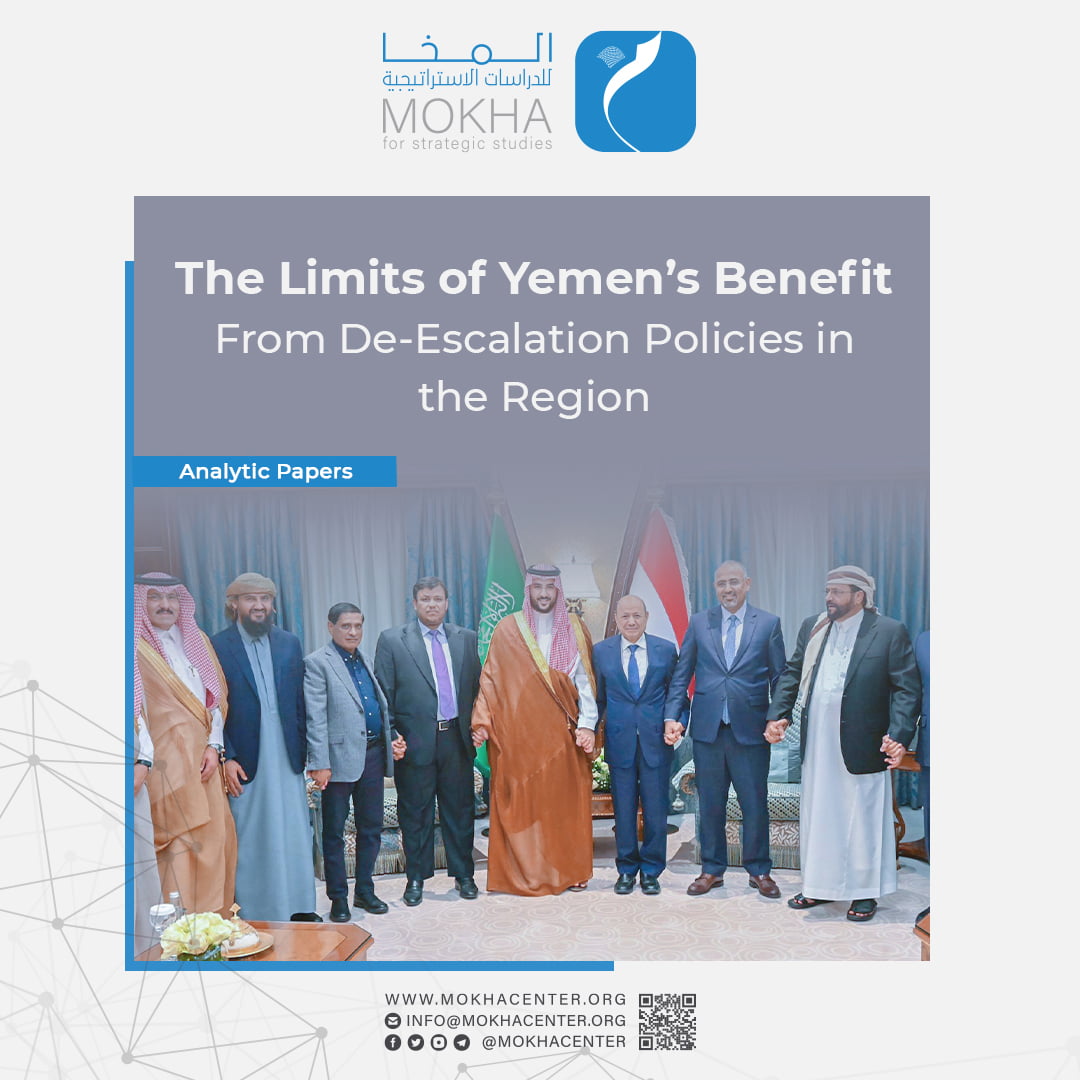
| Getting your Trinity Audio player ready... |
Abstract
For more than eight years, Yemen has been caught in the grip of a brutal conflict, marking it as one of the most complex wars of our time, which involves both internal disputes among Yemeni factions and external tensions involving powerful regional players. Much of the conflict’s origin can be traced back to the ties between the Houthi group and the Iranian regime, particularly their activities targeting the borders and security of Saudi Arabia.
Throughout the eight years, the war has been closely intertwined with the regional dynamics, particularly the escalations involving Iran on one side and Saudi Arabia and the United Arab Emirates on the other. Additionally, the conflict has been influenced by shifting alliances and polarizations, notably between Qatar and Turkey on one side and various Gulf nations along with Egypt on the other.
However, in a departure from the preceding decades, the past three years have shown a notable trend toward mutual de-escalation among the active regional players. This shift has had significant implications, leading to a reduction in the severity of crises across the region.
This paper will discuss the impact of these de-escalation efforts on Yemen, examining the extent to which Yemen has benefited from such policies and exploring the factors that may limit its benefits. It also explores the concept of regional de-escalation, defining it as the collective steps and actions taken by regional actors to alleviate tensions and polarization, resolve crises and reduce conflict levels in the region.
First: Two Decades of Escalation:
- Iraq, Lebanon, Syria and Yemen have perceived the Arab Gulf States’ and Iran’s expanding influence and power projection as an existential threat. This heightened Iran’s role as a central factor in regional conflicts and exacerbated polarization and tension. This influence manifested in ongoing conflicts within nations already grappling with instability.
- There was regional polarization, which stemmed from differing stances toward the demands for change brought about by the Arab Spring revolutions several years ago. This polarization triggered additional crises, notably exemplified by the Qatar-Gulf crisis, a multifaceted diplomatic, economic and political rift that unfolded in June 2017. Saudi Arabia, the UAE, Bahrain and Egypt severed ties with Qatar, with ripple effects reaching entities, like Yemen’s legitimate government1. Additionally, this polarization strained relations between Turkey and several Gulf nations and Egypt, mirroring the rift with Qatar.
- The policies pursued by former U.S. President Donald Trump’s administration toward Iran, including the withdrawal from the nuclear agreement and subsequent imposition of sanctions, heightened tensions in the Arabian Gulf and the Arabian Sea. This period saw what was dubbed as a “ship war,” involving Iran, Israel and other parties.
- The normalization of relations with Israel by several Arab countries further deepened divisions and tensions in the region. This sparked controversy and exacerbated existing fault lines.
- Ongoing armed conflicts in nations such as Iraq, Syria, Libya, Yemen and Sudan, compounded by the involvement of influential regional actors in these conflicts, contributed to regional instability and heightened tensions.
The escalation policies significantly impacted the Yemeni crisis, driven by Saudi Arabia and the Gulf states’ concerns regarding the Houthi group’s ties to the Iranian regime and its perceived threat to the southern border of the Kingdom. In response to this perceived threat, the Gulf states initiated military intervention on March 26, 2015, which continues to this day. During the same period, Iran escalated its political, media and military support for the Houthi group, effectively transforming the conflict in Yemen into a “proxy war.” The heightened tensions between regional powers over the Yemeni conflict served as a pretext for mobilization and contributed to its complexity and protracted nature, leading to its continuation.
What’s more, the polarization that emerged between Qatar, several Gulf states and Egypt since 2017 further complicated the Yemeni conflict. Qatar’s expulsion from the Arab Coalition supporting Yemeni legitimacy2, along with the withdrawal of Gulf State media networks, which had been active and influential in Yemen, led to mutual propaganda campaigns. These countries diverted their support to opposing parties in the crisis, undermining the cohesion of the Arab Coalition and impeding the legitimate government’s efforts to liberate Sana’a and restore stability to Yemen.
Second: De-Escalation Policies:
Since 2021, there has been a noticeable shift among active countries in the region toward reducing escalation and mitigating polarization. This shift can be attributed to both internal factors within these countries, as well as broader regional and international transformations. Key factors include:
- The installation of U.S. President Joe Biden and the adoption of policies differ from those of his predecessor. These policies, often incongruent with the interests and orientations of regional countries, prompted a reassessment of regional policies toward dialogue and reconciliation.
- The ongoing Russian-Ukrainian conflict and its global repercussions, particularly on energy and food security, have placed significant pressure on regional actors amidst polarizations involving the United States, Western countries, Russia and China.
- The profound economic impact of the COVID-19 pandemic, affecting all countries in the region, has further necessitated a reevaluation of policies and priorities.
In response to these transformations, active countries in the region have begun to adopt new policies aimed at reducing tension and conflict, steering toward a path of reconciliation. Over the past three years, notable steps toward a rapprochement and de-escalation have been observed, including:
- The resolution of the Qatari-Gulf crisis: On January 5, 2021, Qatar and the nations boycotting it announced a reconciliation agreement that included the reopening of borders and crossings, alongside the restoration of diplomatic and trade relations between Qatar and the involved countries.3
- The gradual return of relations between Turkey, Saudi Arabia, the United Arab Emirates and Egypt: Turkish President Recep Tayyip Erdogan’s official visit to Saudi Arabia on April 28, 2022, started a series of diplomatic dialogues and visits among officials from the four nations. These efforts culminated in the cessation of estrangement and tension, heralding a new chapter in their relations.
- Syria’s readmission to the League of Arab States: After over a decade of suspension, Syria reclaimed its membership in the League of Arab States on May 7, 2023. This milestone decision followed the unanimous vote by the Council of Arab Foreign Ministers, symbolizing a significant diplomatic breakthrough.
- The reconciliation between Saudi Arabia and Iran: Through a series of confidential negotiations, including an expanded round in China, Saudi Arabia and Iran navigated toward the restoration of their strained relationship. On March 10, 2023, the two nations formally signed an agreement, marking the end of a six-year4 rupture and heralding a new era of diplomacy in the region.
Third: The Repercussions of De-Escalation Policies on the Yemeni Crisis:
The repercussions of de-escalation policies on the Yemeni crisis have indeed been felt, albeit with limitations and selectivity. A significant development was the agreement of a three-month humanitarian truce, which came into effect at the beginning of April 2022 and was renewed twice. Although efforts to extend it further faltered since October 2022, the parties involved in the conflict initially adhered to it, resulting in a decrease in military operations between the Houthi group and national army forces.
During the truce period, restrictions on imports via the port of Hodeida were lifted, and commercial flights from Sana’a Airport to Jordan were permitted. Saudi Arabia refrained from conducting airstrikes against the Houthi group while also avoiding retaliatory attacks on its territory with missiles or drones. Negotiations between the conflicting parties progressed, initially through undisclosed talks that later transitioned into public discussions following significant visits. Notably, a landmark visit by the Saudi delegation to Sana’a in April 2023, led by Saudi Ambassador to Yemen Mohammed Al Jaber, and the subsequent visit of the Houthi delegation to Riyadh on September 14, 2023, marked notable steps toward dialogue.
However, the overall impact of regional de-escalation on the Yemeni crisis remained minimal and selective. Apart from the temporary cessation of hostilities between the Houthis and Saudi Arabia, Yemen primarily experienced a humanitarian truce. Efforts to expand or solidify this truce encountered obstacles, as various parties continued to arm and train, hinting at preparations for potential future conflict.
The regional de-escalation had marginal repercussions on the humanitarian crisis in Yemen, primarily benefiting the Houthi group. The relaxation of restrictions at the port of Hodeidah allowed for the import of oil, gas and goods, enriching the Houthi treasury through customs and tax revenues. However, these financial gains did not translate into the payment of salaries for government officials, who had gone without pay for approximately seven years.
Adding to that, the humanitarian situation in areas under the control of the legitimate government deteriorated significantly. Tax and customs revenues from the port of Aden dwindled as goods were diverted to Hodeida. Also, in October 2022, the Houthis attacked oil export ports in Hadhramaut and Shabwa, hindering the legitimate government’s ability to export oil under uncertain pretexts. This deprived the legitimate government of a crucial revenue source, exacerbating the collapse of the local currency’s value against foreign currencies.
Following the cessation of the grant provided by Saudi Arabia to support electricity in government-controlled areas, supplying electricity in cities, like Aden, became challenging. This strain on resources, compounded by a decline in overall financial support from coalition countries to the national army5, exacerbated the humanitarian crisis across Yemen, particularly in areas under the legitimate government’s authority.
Fourth: Why Did the Regional De-Escalation Have a Limited Impact on the Yemeni Crisis?
The limited impact of de-escalation policies in the region on the Yemeni crisis can be attributed to several factors:
- Saudi-led initiative: The de-escalation efforts were largely driven by Saudi policy directives rather than a genuine commitment to reducing regional tensions. Riyadh unilaterally announced a ceasefire initiative on March 22, 2021, with intentions to restructure the legitimate authority by establishing a Presidential Leadership Council. This council was tasked with negotiating a permanent ceasefire with the Houthis and pursuing a comprehensive political solution6. Despite Riyadh’s efforts to facilitate Yemeni-Yemeni consultations and humanitarian truces, the Houthis remained reluctant to engage in these initiatives. Riyadh’s approach aimed at calming the conflict and advancing political settlement, yet the effectiveness of these efforts remained limited.
- Temporary reduction in tensions: The reduction in tensions concerning the Iranian project, a major driver of conflict in the region, appears to be temporary and characterized by strategic maneuvering rather than sincere motives. Fears regarding the Iranian project persist among regional actors, with all parties anticipating future developments. Given the stakes involved and the strategic interests at play, the transformations in the Yemeni crisis have been modest, with potential setbacks looming on the horizon.
- Complex nature of the conflict: The conflict in Yemen is multifaceted, driven by political, economic and sectarian motives. It is exacerbated by the deep divisions within Yemeni society, compounded by geographical, social and sectarian identities. The conflict is further fueled by external interventions, exacerbating the already dire conditions of poverty and destitution. What’s more, Yemen’s complex conflict dynamics make it less responsive to regional and international de-escalation efforts.
Conclusion:
This paper aims to underscore the significance of internal factors in shaping Yemen’s response to regional polarization and escalation, a trend reaffirmed by historical precedents. Yemen has historically served as a battleground for regional conflicts, notably exemplified by the proxy war between Egypt and Saudi Arabia from 1962 to 1967. This conflict persisted until the cessation of regional polarization, marked by Egypt’s loss of power following its conflict with Israel in 1967.
However, Yemen’s response to de-escalation efforts has been minimal due to internal complexities and intricate entanglements among internal and regional actors. The country’s internal dynamics, compounded by its intricate relationships with regional parties, have hindered significant progress toward de-escalating the conflict. Even the agreement on the truce in April 2022, and its unofficial extension to October 2022, can be attributed more to shifting Saudi policies and exhaustion among Yemeni conflict parties than to a substantial change in Yemen’s response to de-escalation initiatives.
References:
The Coalition to Support Legitimacy in Yemen Ends Qatar’s Participation, Asharq Al-Awsat Newspaper, on: 6/5/2017, available at the following link: https://2u.pw/k5yNwtb
Gulf Reconciliation: Turning the Page on the Disagreement and Restoring Full Relations between Qatar and the Boycotting Countries, BBC Arabic, on: 1/5/2021, available at the following link: https://www.bbc.com/arabic/middleeast-55550853
Iran and Saudi Arabia agree to resume relations and reopen the two embassies after two months, Al Jazeera Net, on: 3/10/2023, available at the following link: https://2u.pw/0nSurZk
See: The War for Economic Resources in Yemen: Context and Risks, Al-Mokha Center for Strategic Studies, at the link: https://mokhacenter.org/pdf/4286mokhacenter0.pdf
The full text of President Hadi’s announcement to form a presidential leadership council and transfer authority to it to manage the state and complete the transitional phase, Al-Masdar Online, on: 4/7/2022, is available at the following link: https://almasdaronline.com/articles/249469
